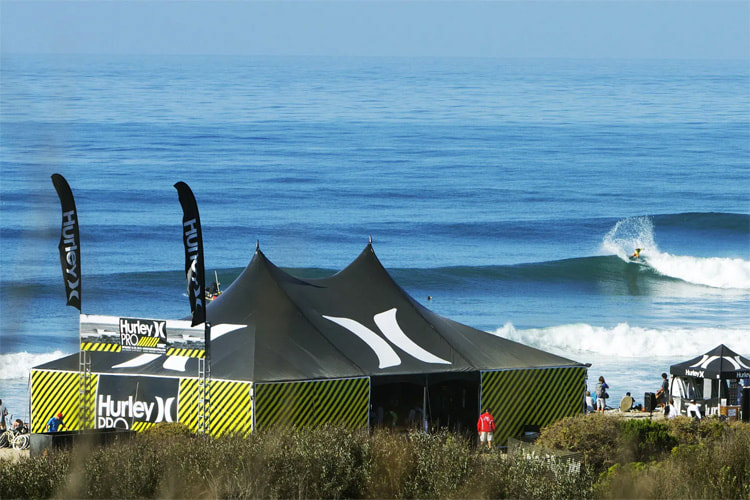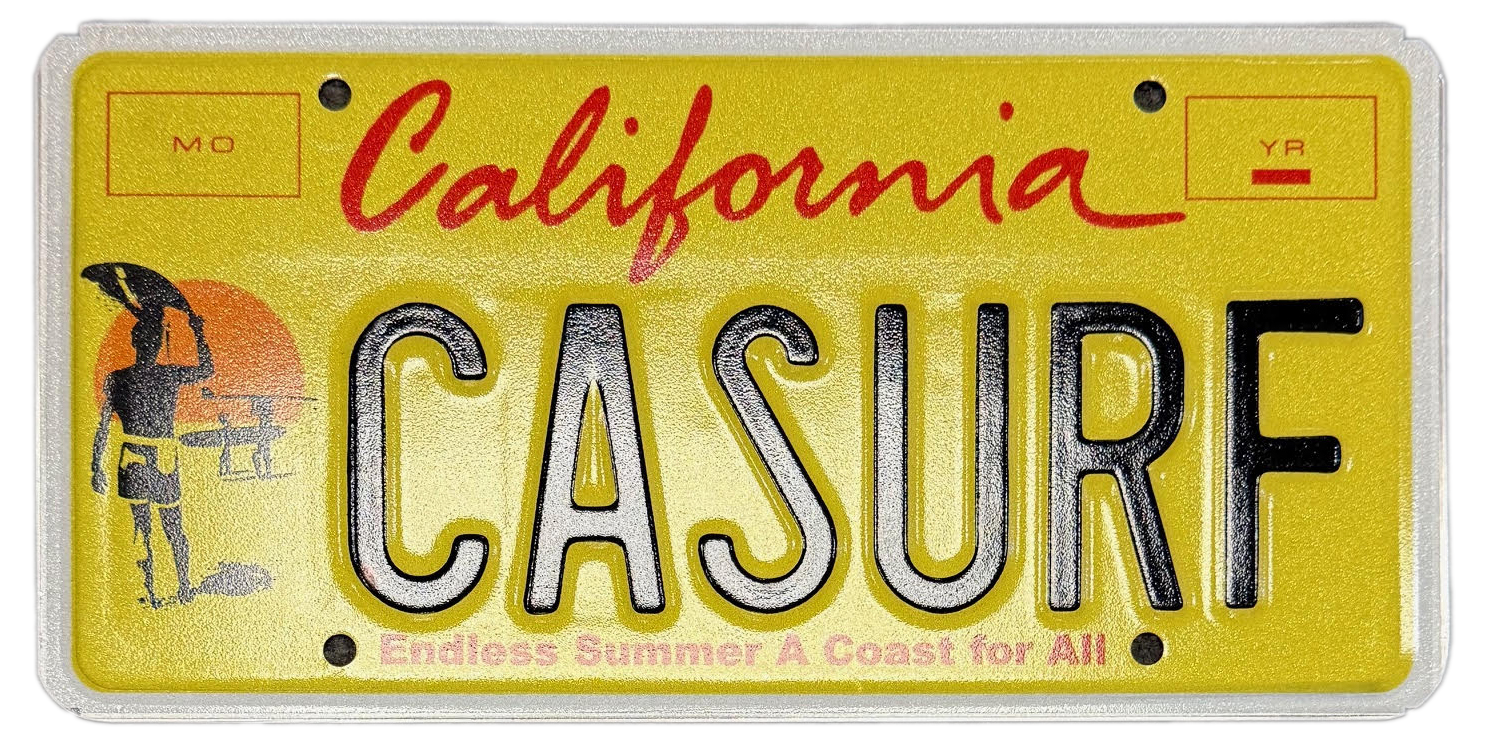State Coastal Conservancy's Explore the coast 2023 Grant Applications are now being accepted11/28/2022 The California State Coastal Conservancy is pleased to announce the availability of grants to public agencies, federally-recognized tribes and indigenous communities, and nonprofit organizations for programs that facilitate and enhance the public’s opportunities to explore California’s spectacular coast and San Francisco Bay shoreline through our Explore the Coast grant program. The ocean, coast, and beaches have long been recognized and used as spaces of joy, relaxation, and healing for many Californians. The ability to experience the coast without fear of physical barriers, feelings of not belonging, or financial challenge is crucial to how individuals cultivate their lifelong connections with the coast. The Explore the Coast grant program seeks to provide enjoyable coastal experiences for people and communities who face challenges or barriers to accessing or enjoying the coast (“ETC Priority Communities”). Projects should also meet one or more of the following priorities: - Provide an enjoyable experience at the coast or bay shore. - Reduce economic, physical, operational, or societal barriers to accessing or enjoying the coast or bay shore. - Inspire ongoing coastal resource stewardship ethic through active learning and interactive activities. Approximately $1 million is available for this grant round. Applicants may request a grant amount of up to $100,000.00. Applicants should apply for projects that could start in late 2023 or early 2024 and aim to be completed by January 2026. The application deadline is Monday, February 27, 2023.
For more information, click here.
0 Comments
Dana Point homes surround the Pacific Ocean like an amphitheater. It’s no wonder much about the town’s character and its economy focuses on the ocean and the marine life that migrates past its doorstep for months on end each year. A year ago it was trademarked the Dolphin & Whale Watching Capital of the World and now it has been designated the first Whale Heritage Site in North America by the United Kingdom-based World Cetacean Alliance. The designation, in which the group partnered with U.S.-based World Animal Protection nonprofit, recognizes the seaside town as a spot where cetaceans – the scientific name for whale, dolphins and porpoise – are embraced in the local culture, economics, politics and social fabric of the community and where people and cetaceans coexist respectfully. “This designation distinguishes Dana Point as a beacon for tourists to select this as a sustainable travel destination,” said Ben Williamson, programs director for World Animal Protection. “I think this adds credibility,” he said. “It includes serious community involvement, economic importance and a look at the way whales impact the area’s heritage.” The designation was created in 2015. Two other sites, Hervey Bay in Australia and The Bluff in South Africa, both won certification in October 2019. Tenerife, Spain, will become the first Whale Heritage Site in Europe. “When they explained the criteria, I said we’re the perfect location,” said Gisele Anderson, who with her husband, Dave Anderson, operates Capt. Dave’s Dolphin and Whale Safari out of the harbor. “We have history, education, saving of animals. We’re really excited because now Dana Point has set the bar.” And Dana Point’s Festival of Whales is the world’s first and longest-running whale festival, it is scheduled this year for March 6/7, 2021 Hundreds of thousands of people every year make their way to the annual two-weekend-long event started by the “father of whale-watching,” Don Hansen, who with Philip Grignon, a high school teacher, opened the first whale and dolphin watching charter in a small trailer when the city’s harbor opened in 1971. It was a way to teach students about the migrating gray whales. Hansen is Kalez’s father. Since its early days, the festival has included whale lectures and information on the town’s history with whales – both of which continue to be part of the event that celebrates its 50th anniversary in March. Anderson had worked with Donna Kalez, who operates Dana Wharf Sportfishing and Whale Watching, to get the city its new trademark and then when approached by the World Cetacean Alliance after that success they partnered to earn it the Whale Heritage Site designation that was officially announced Wednesday, Jan. 27. They had been notified Jan. 7. “I’m so proud of myself and Gisele for getting this done,” Kalez said. “It finally brings us the recognition we’ve been trying to get for so long.” Despite Dana Point’s breathtaking coastline, the selection is not based on geography or its visual splendor, organizers said. “You could be in the best place in the world, but if you’re not acting responsibly or sustainably, you wouldn’t fit the criteria,” said Ben Williamson, programs director for World Animal Protection. Still, the Headlands, a towering cliff outcropping overlooking the Pacific Ocean, has been identified by experts as a navigational point for gray whales charting their course from the Bering Sea in Alaska to the warm lagoons of Baja Mexico, where they mate and give birth. A platform at the Dana Point Nature Interpretive Center allows people on land to get glimpses of the passing behemoths and pods of hundreds and thousands of leaping dolphins. Bryon Ward, president of Burnham-Ward Properties, which is building the $440 million renovation for the 66-year lease with Newport Beach-based Dana Point Harbor Partners, which is presently underway with the renovation project that includes reconstruction of the commercial core and the east and west marinas, two new hotels and fully rebuilt docks, said marine education is a key pillar in the harbor’s history and future. The company is consulting with marine biologists and artists to create additional educational exhibits and whale-related public art installations, he said. “With this designation, we know that even more visitors will depart on their whale watching adventures from Dana Point Harbor,” Ward said. “As we further revitalize the harbor, we will instill the importance of education, conservation and viewing whales in their natural habitat.” The behemoth mammals are so much a part of Dana Point’s everyday life that Anderson and Kalez have created charts for their boat captains to document when special animals make another appearance. There is Patches, a bottlenose dolphin colored in pink, white and black blotches that has been dubbed the “West Coast’s most famed dolphin.” The animal is so popular that his sightings typically spark celebration and curiosity. “I was out by myself three months ago with a group of bottlenose dolphins,” Anderson said. “I saw Patches and it feels like an old friend. It’s joyful because you know the animal is still doing well. It’s a sign of hope and a reminder that our environment is not as bad as we’ve been told.” But, Patches is not the only famous animal. There’s also Casper, an albino dolphin. There are humpbacks known as Twitch, Flicka and Chalkboard. Notcho, Delta, Curley, Hook and Kink are among the recognized blue whales– the largest animals that have ever existed and there is Scarback, a gray whale. Each animal is significant and has a story and connection to the waters around Dana Point. Both charter companies provide naturalists aboard to educate the passengers on animal conservation. They also do their best to help with education and collaborate with the nearby Ocean Institute, also located in the Dana Point Harbor. Both are certified by the cetacean alliance as a responsible whale watch charter meaning they operate at the highest standards for the animals and their passengers. For Barbara Johannes, president of the Dana Point Historical Society, the Whale Heritage Site distinction brings more responsibility. Dana Point is named for Richard Henry Dana, Jr., who detailed his experiences and those of other sailors in 1834 in his book, “Two Years Before the Mast.”
“It is our inherent responsibility to promote a safe cetacean habitat along our coast for the benefit of present and future generations,” she said. “I think Richard Henry Dana Jr. would be pleased.” From Carlsbad-based documentary filmmaker Brooks Venters comes the film "Finding a Way". It's a biographical documentary exploring the life of Pete Gustin, a world-renowned blind voiceover artist, surfer, and Youtuber. The 26 minute documentary follows Gustin's life from childhood to present, and documents the major challenges he's faced due to his blindness. "Finding a Way" premiered on January 26 on Pete Gustin's self-run "Blind Surfer" Youtube channel. It's the only channel produced, shot, and edited by a blind person. The documentary release comes on the heels of an exceptional year for Gustin. He won two Voice Arts Awards from The Society of Voice Arts and Sciences: Outstanding Movie Trailer of the Year for the film "Unhinged", and Outstanding TV Promo of the year for the TV show "Archer". His new Youtube channel has reached over 10,000 subscribers. He also got engaged to his longtime girlfriend Maggie Carpenter. Gustin boasts a storied voiceover career and has been heard on ESPN, Fox, Fox News, CBS, ABC, Cartoon Network, Comedy Central, FXX and many major movie trailers. The documentary is both a documentation and a celebration of Pete's journey and accomplishments. "Blind Surfer" Pete Gustin said: "I'm super excited about this documentary. It captures the full extent of the challenges I've faced due to my blindness. I've had other media outlets cover my voiceover career and my surfing separately, but this is the first piece that covers it all. It captures the true message that I'm trying to get across, that I've been able to find a way to do what I want through hard work and never giving up." Brooks Venters produced, directed, shot and edited the documentary. Venters is a North Carolina native and Digital Marketing professional. He moved to Southern California 7 years ago. Venters met Gustin through Instagram in August of 2020. He's been shooting drone footage of Gustin for the "Blind Surfer" Youtube channel since. After learning Gustin's story, Venters saw the potential for a great piece. He has produced several other documentaries covering subjects like homelessness, the life of Bill Walton, and solar-powered homes. Finding a Way" is now available to watch in full 4k on the "Blind Surfer" Youtube channel here: https://youtu.be/8pD_9Ym6k70. Brooks Venters is a Documentary Filmmaker and Digital Marketing Professional. Contact him at [email protected], on his website at www.dronesesh.com, or @dronesesh on Instagram. Pete Gustin is a world-renowned voiceover artist and runs the "Blind Surfer" Youtube channel. He can be found at www.petegustin.com, @realpetegustin on Instagram, and in weekly Vlog episodes on the "Blind Surfer" Youtube channel.
The surfing industry is seeing a boom in business during the COVID-19 pandemic.
One place where business has boomed is at Drill Malibu Surf and Skate. Craig Clunies-Ross said he and his staff will be riding the surf frenzy wave as long as they can. "It's exploding," Clunies-Ross said. The shop owner said surf lessons and board and wetsuit sales have quadrupled. "People are chasing the delivery truck to our shop and there's a line before we can even get them off the delivery truck," employee Christian Pflaum said. After losing both his homes to the Woolsey Fire in 2018, the Malibu business owner thought his luck was turning around in the spring. "We felt like we'd really righted the ship and got things back to normal and then the pandemic hit this spring," Clunies-Ross said. Clunies-Ross was forced to shut his doors for a few months, but with the pandemic pushing most outdoors, people want to hit the water. "I was just stuck in my apartment all day. I'm a musician. I've been working from home and I just wasn't getting outside, so I'd always been thinking about it and just decided to teach myself," surfer Sam Saunders said. "During COVID, there's not as many ways to be social or be in a community and so for me, surfing has kind of become that way to just connect and just to be around people," surfer Mattie Peña said. "As stores started to open up and down the California coast, the demand got crazy and companies like O'Neill wetsuits, Catch Surf, Storm Blade, Rip Curl - they started running out of product because stores like mine were seeing elevated business," Clunies-Ross said. "Before, we would do one-time lessons for first-time tourists who just want to get the California scene. Now, it's more like surf coaching and surf training with people that are renting the beach houses in this area, so we'll have clients that'll stick around for months with us," Pflaum said. Clunies-Ross said sales have been record-breaking in September. He's on his way to his best year since opening his shop in 2009. Statistics received from the Florida Department of Motor Vehicles show that total revenue from all specialty plate sales in August, 2020 actually decreased to $2,701,403.00 from $2,798,122.00 for August, 2019. However, Endless Summer was the highest grossing plate in August, 2020 with $182,075.00, increasing from $171,250.00 for August, 2019. The next highest was University of Florida with $159,775.00 (falling from $172,825.00 in August, 2019). This continues to follow the increase each month which will ultimately result in Endless Summer taking over the top selling plate spot from the University of Florida, which they have held for over 20 years. The University of Florida license plate was authorized in 1986, Endless Summer was not available until 2011. In 2019, University of Florida raised $2,188,575.00 while Endless Summer raised $2,006,075. So far in 2020, through August 31, University of Florida has raised $1,321,950.00 and Endless Summer has raised $1,367,650.00. Nearly 100,000 Florida vehicles should have the Endless Summer specialty license plate on their vehicles in 2021. Revenue from sales of the license plate go to Surfing’s Evolution & Preservation Foundation, a 501(c)3 charitable organization, which was established in 2008. The primary funding source for Surfing’s Evolution & Preservation Foundation is the Florida “Endless Summer” specialty license plate. The plate is one way to show support for the sport of surfing, as well as keeping Florida’s beaches healthy and clean.
In the enabling legislation, and following the Foundation’s mission, the primary use of the funds from the specialty plate is to support the proposed Surfing’s Evolution & Preservation “Experience” project, which will be located in Cocoa Beach. The Surfing’s Evolution & Preservation “Experience” will be an interactive encounter telling the story of how surfing has evolved and its role in the creation of two new sports: skateboarding and snowboarding, among other sports. This project, currently estimated at between $15 million and $20 million, is in the initial concept and planning stages. So far, $10,674,302.20 has been raised from sales of the Endless Summer specialty license plate in Florida. In addition to the Surfing’s Evolution & Preservation “Experience” project, the Foundation has assisted organizations and events whose missions parallel the Foundation’s goals: keeping beaches healthy and safe through education and action. The Foundation has researched opportunities to help and has found a number of partners, including the Marine Discovery Center, whose mission is “To protect and restore the Florida coastal and Indian River Lagoon ecosystems through education, research and community stewardship.” The Foundation also supports Special Olympics Florida with its board sports programs, and a number of beach cleanup organizations, including local affiliates of Keep America Beautiful, which allows participation in annual events such as Earth Day and the International Coastal Cleanup. Surf companies sell exciting, idyllic, and adrenaline-fueled surfing experiences, and they're highly successful doing it. The reason why surfing became a multimillion-dollar sports industry is that brands appeal to consumers' emotions and dreams in a very effective way. Whether inviting you to "stay high" or "live the search," corporate surfing makes you believe "life's better in boardshorts." And it could be, as long as these giant conglomerates continue selling clothing, footwear, and accessories. With the advent of Olympic surfing and wave pools, the sport of riding waves will likely continue to conquer new markets and segments of the population that have never had contact with surfboards. The surf industry is what it is, and surfing wouldn't be what it is today without the innovations and technologies companies have developed during the sport's first century of existence. Rip Curl, Quiksilver, Billabong, and O'Neill - also known as the Big Four - focus their marketing plans on selling clothing, i.e., t-shirts, jackets, pants, sweatshirts, flannels, hoodies, tanks, and boardshorts. Surf companies focus their operation in three major territories: America, Europe, and Oceania. That's where they get over 90 percent of their annual income. The majority of the world's wetsuits are made in the same place. Taiwan's Sheico Group produces two million wetsuits per year for the planet's most prestigious surf companies. American multinational corporation Nike announced it has reached a definitive agreement to sell Hurley to Bluestar Alliance LLC. Bluestar Alliance is a brand management firm founded by Joseph Gabbay and Ralph Gindi in 2006. It owns, manages, and markets a portfolio of consumer brands including Bebe, Brookstone, Catherine Malandrino, English Laundry, Joan Vass, Kensie, Limited Too, Nanette Lepore, Tahari, and others. In 2019, Bluestar Alliance is expecting combined retail sales of over $3 billion. "We have always admired Hurley. It has maintained its leadership role and premium positioning in the surfing world," noted Joey Gabbay, CEO of Bluestar Alliance. "We look forward to building upon the existing Hurley network and expanding to additional countries. We see the brand continuing to evolve into a 360-degree lifestyle brand, with action sports playing a key role." The terms of the deal between both parties have not been publicly revealed. In 2002, when Nike acquired Hurley, the surf company founded by Bob Hurley had annual sales of $70 million. Last year, Kathmandu announced the acquisition of Rip Curl, the New Zealand-based retailer took over the iconic Australian surf brand for A$350 million ($236 million). Rip Curl was founded in 1969 by Brian Singer and Doug Warbrick, in Torquay. The company has been in the hands of the duo ever since. Kathmandu aims to give birth to a "global outdoor and actions sports company" with annual revenues of NZ$1 billion ($626 million).
Although well known in Australia and New Zealand, the Kiwi camping gear brand hopes to take advantage of the synergies to conquer the European and North American markets. Kathmandu acquired 100 percent of Rip Curl Group Pty Limited. Pro surfer Kelly Slater plans to build world's largest artificial wave in California desert3/2/2020 Professional surfing legend Kelly Slater plans to open the world's largest artificial wave in the Coachella Valley, made famous over the last decade for its eponymous music festival. The wave will use technology by Kelly Slater Wave Co., which has spent the better part of a decade creating the perfect man-made wave. One already exists at the Kelly Slater Surf Ranch in Lemoore, California, more than three hours north of Los Angeles. Slater's latest enterprise would be part of the 400-acre Coral Mountain resort, which would include homes, a private club, multiple dining venues and adventure sports. To realize this strange California dream, the 11-time world champion surfer teamed up with private real estate investment and development firm Meriwether Companies and Big Sky Wave Developments, founded by Michael B. Schwab, son of the brokerage pioneer Charles Schwab. The idea was to breathe new life into a destination that for decades was synonymous with golf. "The Coachella Valley is dominated by more than 150 golf courses," said Noah Hahn, a partner at Meriwether Companies. "This is a radically different vision." The $200 million Coral Mountain complex, which is in the permitting stage, would have a 150-room hotel and up to 600 homes in the $1 million to $5 million range, The Associated Press reported. Access to amenities would be exclusive to homeowners, hotel guests, members and their guests. Dining would be open to the public through reservations.
The centerpiece of Coral Mountain would be the wave basin, which would hold about 18 million gallons of water. A golf course, by contrast, uses 1 million gallons of water a day, Hahn said. The Coral Mountain wave would have room for about 25 surfers at a time — about five on the main wave and 10 each on the smaller waves at each end of the basin. It would feature waves for all athletic levels, Hahn said. He estimated that Coral Mountain could break ground by 2021. Electric vehicle entrepreneur Henrik Fisker has unveiled his first mass-market EV, an SUV called the Fisker Ocean, ahead of the 2020 Consumer Electronics show. Starting at $37,500, Fisker says the electric SUV will get between 250 and 300 miles per charge, and it will feature solar panels on the roof. Fisker Inc., plan to put the Ocean on the road sometime around the end of 2021 or the beginning of 2022.
Fisker Inc. also says it plans to develop two other models that will use the Ocean’s technological platform and also teased features like a karaoke mode (which Tesla added to its cars late last year) and a “California mode” where all the windows will roll down at the touch of a button. For more information, click here.  Erik “E-Lo” Logan Erik “E-Lo” Logan The WSL has announced that Sophie Goldschmidt “will be stepping down from her post” as Chief Executive Officer and that President of Content, Media and Studios Erik “E-Lo” Logan will be filling her shoes. “Sophie has had a huge impact on the WSL,” said WSL-owner Dirk Ziff in the presser. “She is responsible for transforming both our business capabilities and culture in her tenure as CEO. With the converging trends in sports, media and entertainment, we mutually agreed it was time to make a change. Erik Logan is a proven leader and a world-class media executive with a profound personal connection to the sport of surfing. We are excited about what he will accomplish as CEO. We will always be grateful to Sophie for her contributions to surfing and we look forward to the WSL’s next chapter.” “With the WSL now ready to become a more focused content and media company, the Board and I have mutually agreed it is the right time to make a change,” Goldschmidt said. “Having worked closely with Erik, he is the right person to lead the WSL into its next era. I am excited about what lies ahead for the organization.” |
blogArchives
May 2025
Categories
All
|
Funding from this plate will be directed to programs that promote coastal access, make coastal lands welcoming to all, and increase opportunities for coastal enjoyment.










